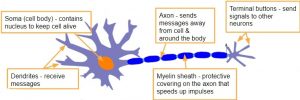Education
Screen Time and Early Childhood Development
I’d like to draw your attention to an article in the November 4th, 2019 edition of the New York Times. Perri Klass reports on a recently published study examining screen use and the development of young children’s brains.
47 healthy 3 to 5 year olds, from English-speaking middle- to upper-middle class households were involved in the study. Their parents were questioned about their child’s screen use and given a ScreenQ score of between 0 and 26, based on adherence to the screen time guidelines set by the American Academy of Pediatrics. The higher the score, the further the deviation from the guidelines and may indicate children who:
- Began watching TV and/or using apps before the age of 18 months;
- Have excessive screen time, i.e., watch more than an hour of day of (often poor-quality) content;
- Do not co-view with parents;
- Have a screen in their bedroom;
- Are exposed to violent content;
- Are given technology to pacify them.
The children were then given an MRI scan to assess the levels of myelin coating the neurons in their brain.
What is myelin and what are neurons?
Neurons are the complex network of cells (over 100 billion) which receive information from our senses that must then be interpreted by our brain. Neurons allow messages to travel between the brain and the body in an electrochemical process. Each individual neuron is linked to many others.
When neurons are not working, they are described as ‘at rest.’ However, when a signal is received, e.g., when we learn something, chemicals cause an electric signal to be fired. This is known as an ‘action potential’ (or impulse). Dendrites receive the signal and transmit it to the soma. Strong signals may be sent from there down the axon and to the terminal buttons. The terminal buttons emit neurotransmitters (chemicals). These can cross the space between the neurons (known as synapses) and communicate with neurons nearby. These signals may prompt the firing of these nearby neurons.

Myelin is laid down around a nerve fibre when that fibre is stimulated. This myelin sheath is a protective covering on the axon that speeds up impulses, insulating the nerve cells and increasing the efficiency of signalling.
As we continue to practice a skill or review learning, the signals are fired repeatedly, creating pathways between the neurons. The process by which neural connections become stronger with frequent activation is known as long-term potentiation (LTP). These strong connections mean we find things easier and are better at them. For example, strong neural pathways enable us to do procedural things without thinking about it, e.g., riding a bicycle. Unused connections disintegrate.
“The adage from neuroscience is the neurons that fire together wire together,” Dr. Hutton said. “Practice doing anything reinforces connections.”
Whilst practice reinforces connections, the caveat here is that there are critical periods during maturation in which humans are particularly sensitive to certain stimuli. Miss those windows and catching up becomes impossible.
What did the researchers find?
The results of the MRI scans were examined in light of the ScreenQ data.
Children in the study averaged a ScreenQ score of 9 (with the best score being 1 and the worst 19). Those children with higher screenQ scores had lower levels of myelination in the brain, especially in areas relating to language and literacy (control measures for age, gender, and income were employed.) Higher screen exposure correlated with poorer expressive language and slower language processing.
The authors point out they cannot definitively tell whether this association is due to the use of screens themselves or whether the time taken away from other interactive activities has led to this finding. As such, their guidance is to avoid screens, particularly tablets, in the early years and to focus on human interaction, play, and language-rich activities including chatting, singing, and reading.
Sounds like sage advice indeed.

